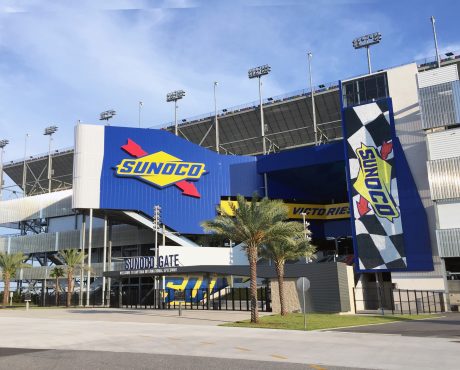This Could Be an Opportunity for Yield Hunters
In today’s market, many ultra-high yielders happen to be down-and-out stocks.
This is especially true in the energy sector. Ever since the downturn in oil prices started a few years ago, investors haven’t been very enthusiastic about the industry. And as a result of plunging share prices, the yield of quite a few energy stocks have climbed above the double-digit mark.
Sunoco LP (NYSE:SUN) is one such instance. An energy-based master limited partnership (MLP) headquartered in Dallas, Texas, Sunoco’s stock currently trades at $30.12 apiece, which is about half of its high reached in August 2014.
If the partnership kept its cash distribution rate at the same level, such a drop in stock price would give a huge boost to its yield. So, was that the case for Sunoco LP?
No, because the partnership actually did better than that. Rather than maintaining its payout, Sunoco LP managed to raise its distribution, even during the massive commodity price downturn.
In August 2014, when the price of oil started its free fall, Sunoco LP paid a quarterly cash distribution of almost $0.52 per unit. Since then, the partnership has increased its payout on eight different occasions.
With SUN stock’s quarterly distribution rate currently standing at almost $0.83 per unit, Sunoco’s payout has grown by 58.8% since the oil price crash. (Source: “Distribution History,” Sunoco LP, last accessed February 27, 2018.)
If you’ve been following the sector, you’d know that, during this period, dividend cuts were common for energy stocks. What Sunoco LP managed to accomplish was quite an impressive feat.
Offering an Ultra-High Distribution Yield
We calculate a company’s yield by dividing its annual cash payout by its stock price. So when Sunoco LP’s cash payout (numerator) increased while the stock price (denominator) plunged, the yield became substantially higher.
How high did it get? Well, if an investor purchases SUN stock today, they can lock in an annual distribution yield of 11%.
Of course, in this day and age, a yield as high as this could be a sign of trouble. In particular, you might be wondering whether the partnership could afford this kind of payout growth when many other companies in the industry were deep in the doldrums.
Well, to see whether this 11% yield is too good to be true, let’s check out the partnership’s financials.
In the fourth quarter of 2018, Sunoco LP generated $114.0 million in adjusted distributable cash flow, representing a 7.5% increase year-over-year. The amount provided 1.33-times coverage for its cash distributions paid for the period. (Source: “Sunoco LP Announces Fourth Quarter and Full Year Financial and Operating Results,” Sunoco LP, February 20, 2019.)
In full-year 2018, Sunoco’s distribution coverage ratio came out to 1.32 times. This represents a sizable margin of safety because the number means that the partnership generated 32% more cash than what was needed to pay distributions to unitholders for the year.
In previous investor presentations, the partnership said it was targeting a distribution coverage ratio of 1.2 times. Based on fourth-quarter and full-year results, Sunoco has outperformed its own target. Such strong financial results mean that the partnership should be set to keep delivering oversized distribution checks to investors. (Source: “Investor Presentation,” Sunoco LP, last accessed February 27, 2019.)
“On January 25th, we declared an $0.8255 per unit distribution, the same as last quarter. We are confident in our ability to sustain this distribution,” said Thomas R. Miller, Chief Financial Officer for Sunoco LP. “Our liquidity remains strong with approximately $800 million available on our revolving credit facility at year-end.” (Source: “Sunoco LP (SUN) CEO Joe Kim on Q4 2018 Results – Earnings Call Transcript,” Seeking Alpha, February 21, 2019.)
Sunoco LP: Running a Solid Business
One of the reasons why Sunoco LP can pay such hefty distributions during an industry downturn is that the partnership has no exploration or production business. Instead, Sunoco focuses on motor fuel distribution.
Right now, the partnership delivers fuel to around 10,000 convenience stores, independent dealers, commercial customers, and distributors across 30 states. Its own brand, Sunoco, is well known among motor racing enthusiasts because it’s the official fuel of NASCAR and INDYCAR. At the same time, Sunoco distributes other popular fuel brands such as “Exxon,” “Shell,” and “Chevron.”
Because wholesale fuel margins tend to be more stable than commodity prices, Sunoco can run a solid business despite the oil price downturn. And the continuously strong demand for gasoline in the U.S. means the partnership is well positioned to generate recurring cash flow.
Sunoco LP Stock Chart
Chart courtesy of StockCharts.com
The Bottom Line on SUN Stock
At the end of the day, I want to point out that, while the long-term performance of SUN stock hasn’t been stellar, the partnership’s solid financial performance has helped it get some investor attention lately. Combined with the overall bullish sentiment for U.S. equities in recent weeks, Sunoco stock is up 11.4% year-to-date.
If you want to earn a safe, double-digit yield from the stock market, perhaps now is the time to take a serious look at Sunoco LP.
